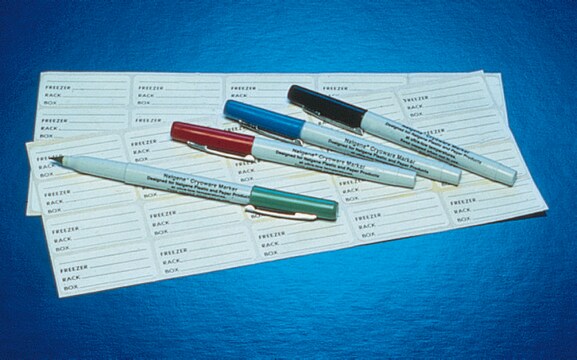MABF1991
Anti-Ly9 (CD229) Antibody, clone Ly9.7.144
purified antibody, from mouse
Iniciar sesiónpara Ver la Fijación de precios por contrato y de la organización
About This Item
Código UNSPSC:
12352203
NACRES:
NA.41
Productos recomendados
origen biológico
mouse
forma del anticuerpo
purified antibody
clon
Ly9.7.144, monoclonal
mol peso
calculated mol wt 73.14 kDa
reactividad de especies
mouse
técnicas
flow cytometry: suitable
immunodepletion: suitable
immunofluorescence: suitable
isotipo
IgG1κ
Nº de acceso Protein ID
Nº de acceso UniProt
Condiciones de envío
dry ice
temp. de almacenamiento
−20°C
modificación del objetivo postraduccional
unmodified
Especificidad
Clone Ly9.7.144 detects T-lymphocyte surface antigen Ly-9 in murine cells. It targets an epitope with in the N-terminal Ig domain.
Inmunógeno
300.19 mouse tumor cells transfected with full-length murine Ly9 protein.
Aplicación
Anti-Ly9 (CD229), clone Ly9.7.144, Cat. No. MABF1991, is a mouse monoclonal antibody that detects T-lymphocyte surface antigen Ly-9 and has been tested for use as an Agonist and in Flow Cytometry, Immunofluorescence, Immunodepletion.
Quality Control Testing: Evaluated by Flow Cytometry in Mouse splenocytes.
Flow Cytometry Analysis: 1μg of this antibody detected Ly9 (CD229) in one million Mouse splenocytes.
Tested Applications: Flow Cytometry Analysis: A representative lot detected Ly9 (CD229) in Flow Cytometry applications (Sintes, J., et. al. (2013). J Immunol. 190(1):21-6; Cuenca, M., et. al. (2016). J Immunol. 196(2):726-37).
Agonist Analysis: A representative lot of this antibody induced a significant decrease in the production of IL-4 in wild-type mice. (Sintes, J., et. al. (2013). J Immunol. 190(1):21-6).
Immunodepletion Analysis: A representative lot of this antibody selectively depleted splenic MZ and B1 B cells in wild-type BALB/c mice. (Cuenca, M., et. al. (2016). J Immunol. 196(2):726-37; Cuenca, M., et. al. (2018). Eur J Immunol. 48(1):99-105).
Immunofluorescence Analysis: A representative lot detected Ly9 (CD229) in Immunofluorescence applications (Cuenca, M., et. al. (2016). J Immunol. 196(2):726-37).
Quality Control Testing: Evaluated by Flow Cytometry in Mouse splenocytes.
Flow Cytometry Analysis: 1μg of this antibody detected Ly9 (CD229) in one million Mouse splenocytes.
Tested Applications: Flow Cytometry Analysis: A representative lot detected Ly9 (CD229) in Flow Cytometry applications (Sintes, J., et. al. (2013). J Immunol. 190(1):21-6; Cuenca, M., et. al. (2016). J Immunol. 196(2):726-37).
Agonist Analysis: A representative lot of this antibody induced a significant decrease in the production of IL-4 in wild-type mice. (Sintes, J., et. al. (2013). J Immunol. 190(1):21-6).
Immunodepletion Analysis: A representative lot of this antibody selectively depleted splenic MZ and B1 B cells in wild-type BALB/c mice. (Cuenca, M., et. al. (2016). J Immunol. 196(2):726-37; Cuenca, M., et. al. (2018). Eur J Immunol. 48(1):99-105).
Immunofluorescence Analysis: A representative lot detected Ly9 (CD229) in Immunofluorescence applications (Cuenca, M., et. al. (2016). J Immunol. 196(2):726-37).
Descripción de destino
T-lymphocyte surface antigen Ly-9 (UniProt: Q01965; also known as Cell surface molecule Ly-9, Lymphocyte antigen 9, SLAM family member 3, SLAMF3, Signaling lymphocytic activation molecule 3, CD229) is encoded by the Ly9 (also known as Ly-9) gene (Gene ID: 17085) in murine species. Ly-9 is a single-pass type I membrane protein that serves as a homophilic cell surface receptor present on all lymphocytes and is highly expressed on innate like lymphocytes. Its activity is controlled by presence or absence of small cytoplasmic adapter proteins, SH2D1A/SAP and/or SH2D1B/EAT-2. Ly-9 plays a negative role in the signaling pathways required for innate-like lymphocyte (iNKT) development in the thymus. It also promotes T-cell differentiation into a helper T-cell Th17 phenotype leading to increased IL-17 secretion. Ly-9 is synthesized with a signal peptide (aa 1-47) that is cleaved off in the mature form. The mature form has an extracellular domain (aa 48-453), a short transmembrane domain (aa 454-474), and a cytoplasmic domain (aa 475-654). The extracellular domain contains two Ig-like V type (aa 48-158 and 250-362) and two Ig-like C type (aa 159-243 and 353-453) domains. In addition, LY-9 has two immunoreceptor tyrosine-based switch motifs (ITSM) motifs (aa 599-604 and 623-628), which mediate the interaction with the SH2 domain of SH2D1A and SH2D1B. Ly-9 deficient mice are reported to develop normally, but exhibit a significant difference in the distribution of thymocyte subsets compared to wild types. This antibody (clone Ly9.7.144) is shown to reduce the number of iNKT cells in the spleen and also reduce the absolute number of both NKT1 and NKT2 cells. (Ref.: Sintes, J., et al. (2013). J. Immunol. 190(1); 21-25; Cuenca, M et al., (2018). Eur. J. Immunol. 48(1); 99 105).
Forma física
Purified mouse monoclonal antibody IgG1 in PBS without azide.
Almacenamiento y estabilidad
Stable for 1 year at -20°C from date of receipt. Handling Recommendations: Upon receipt and prior to removing the cap, centrifuge the vial and gently mix the solution. Aliquot into microcentrifuge tubes and store at -20°C. Avoid repeated freeze/thaw cycles, which may damage IgG and affect product performance.
Otras notas
Concentration: Please refer to the Certificate of Analysis for the lot-specific concentration.
Cláusula de descargo de responsabilidad
Unless otherwise stated in our catalog or other company documentation accompanying the product(s), our products are intended for research use only and are not to be used for any other purpose, which includes but is not limited to, unauthorized commercial uses, in vitro diagnostic uses, ex vivo or in vivo therapeutic uses or any type of consumption or application to humans or animals.
Certificados de análisis (COA)
Busque Certificados de análisis (COA) introduciendo el número de lote del producto. Los números de lote se encuentran en la etiqueta del producto después de las palabras «Lot» o «Batch»
¿Ya tiene este producto?
Encuentre la documentación para los productos que ha comprado recientemente en la Biblioteca de documentos.
Nuestro equipo de científicos tiene experiencia en todas las áreas de investigación: Ciencias de la vida, Ciencia de los materiales, Síntesis química, Cromatografía, Analítica y muchas otras.
Póngase en contacto con el Servicio técnico







